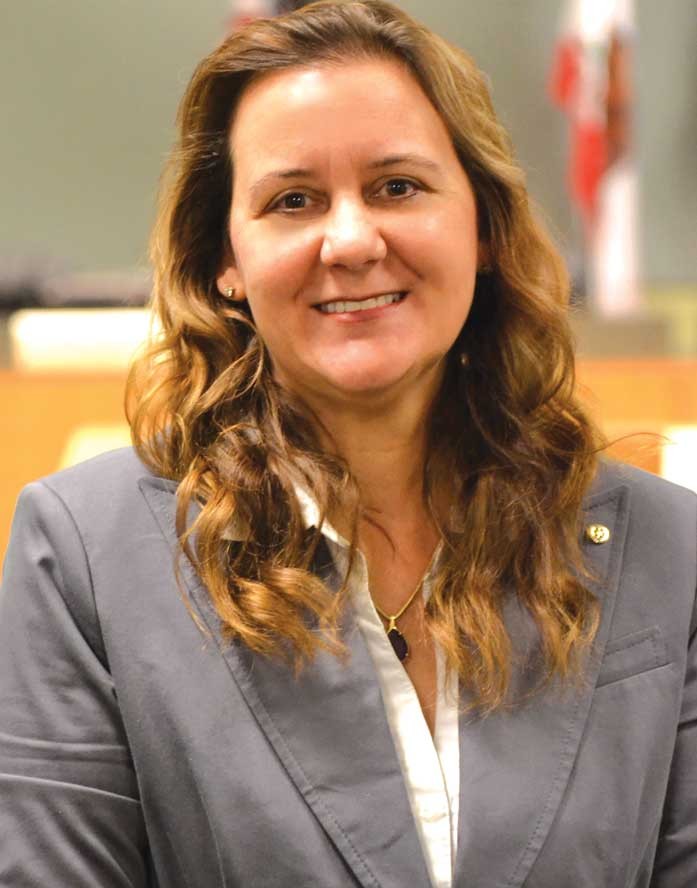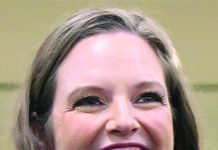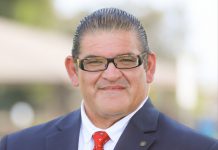Editor’s note: This is a continuation of Trina Coffman-Gomez’s column from last week’s edition, which touches on misconceptions surrounding the county’s transportation planning.
• There is a lack of representation for the Hispanic community: Commissioners are elected public officials that have taken an oath to represent all demographics, including the poor, the elderly, and people who speak languages other than English. All public meetings offer translation services. The City Council and the RTC are available to help any interested citizen learn more about transportation plans and policy and constantly strive to outreach and improve communications for all residents in our community.
• We will see tankers on our rail line: The contract with Progressive Rail prohibits tank car storage without approval from the RTC. Since they have come in, they have been proactive by removing the stored railcars that do not belong to any of our freight vendors. Some local businesses rely on freight for their product deliveries or exports such as Agron or Big Creek Lumber. Watsonville has five vendors using freight service today. You will see their rail cars moving their products and materials. Goods shipped by rail travel more efficiently and emit fewer greenhouse gasses. What’s more, shipments by rail take trucks off the road and thereby relieve congestion and reduce wear and tear of the roadway system.
• The trail won’t get done: The trail will, in fact, be done sooner by keeping the tracks and thus bypassing the eight-year-long process required for the RTC and community to change direction, find the funds to repay the state, manage environmental impact studies, and the possibility we could lose a significant amount of funding we now have in place. Currently, 13 miles of the trail projects are in various stages of development, with some funding already obtained. The first project is scheduled to be completed in 2019. The corridor has the capacity to build the rail and the trail for the entire length as demonstrated in the MBSST Master Plan. Some segments have more constraints than others which will require more intensive efforts and costly investments. Until those more difficult segments can be built out, we will continue using the on-road network of sidewalks and bike lanes which are ever being improved. The end result will be a transportation system that will take advantage of the dual benefits of active transportation and longer distance transit service.
• The cost of a train will be a burden to the taxpayers: The cost of not having the train is many times higher, including the costs of operating motor vehicles, the cost of collisions and accidents, lost productivity, lower economic activity, and the impacts of climate change for failing to offer modern alternatives to driving in congestion. These are among the reasons Scenario B, rail and trail, had the highest scores in the areas of economic vitality. To put this into perspective another way, we are currently paying nearly 78 percent of the rider’s share of the passenger that is taking the bus today. It will be the responsibility for the RTC to explore and identify all options for funding a passenger train.
• The rail and the trail cannot coexist: All of the data that the RTC has provided has shown how the different modalities can complement each other. The corridor has the capacity and the width to safely handle passenger rail, pedestrians and cyclists. Where it is deemed necessary, safe separate bridges will be built for bikes and pedestrians.
• There won’t be enough ridership to cover the cost of a train: The City of Watsonville has a density of 8,400 people per square mile, many of which use the highway for commuting daily. Other communities with this density have shown us that rail is an affordable transportation option. While coverage of costs is important, no transportation system, not roads, buses, ferries or air travel are covered entirely by fares or by use taxes. If the commission chooses to move forward on the option to include passenger rail, funding will be identified along with where the remaining funding will need to come from for the cost associated per rider. What the RTC has done is to study ridership and estimate the cost per rider based on other similarly populated densities from passenger rail lines like the San Diego Sprinter and Sonoma Marin SMART trains. They estimate the fares for riders to be an average of $5.50. Ridership estimates from the UCS indicate there could be approximately 7,000 riders per weekday (or more than two million trips per year) with trains between Santa Cruz and Watsonville (including connections to Pajaro station). This is with the assumption of service from 6 a.m. to 9 p.m. every 30 minutes during weekdays and more limited service on weekends.
• Why can’t we just build a third lane? Auxiliary lanes will continue to be built as planned, but these are discontinuous and only exist between freeway entrances and exits. Much of the highway corridor is constrained and does not provide space for an auxiliary lane, much less for an additional third general traffic lane or High Occupancy Vehicle Lane (HOV). Construction to accommodate a third lane would involve the reconstruction of every interchange/overpass and the two rail over-crossings at very high cost. Measure D includes construction funds for a few miles of lanes between: Soquel Drive and 41st Avenue, Bay Avenue/Porter Street and Park Avenue, and Park Avenue and State Park Drive. Any additional work requires additional funding and Caltrans has expressed less interest in funding highway widening than in the past. The HOV lanes would cost between $600 million and a billion dollars to construct, which is the most expensive option in areas that would actually have enough width to expand the highway.
• Why can’t we put the train down the middle of the Highway 1? For many of the same reasons additional lanes are a serious challenge, space and cost, a rail line located in the freeway corridor has little chance of working and would cost a great deal of money. Since we have an active rail line that can be utilized soon if we invest in improvements, it’s much more practical to use the line we have and make the safety improvements needed. This also includes investing in the safest technology that is quiet and least intrusive to greenhouse gas emissions. Currently, there are passenger trains with low and zero-emission vehicle power, induction and wireless charging and battery advancements.
• If we choose a passenger rail, we will create a hardship for the Metro bus services? Public transportation can become more reliable and on time when it is synchronized and in harmony with moving passengers. Bus routes will take into consideration the passenger rail times to ensure the connectivity to the final destination along with other first mile/last mile options such as bicycle and pedestrian modalities. Santa Cruz Metro will work with the RTC to ensure the highest and best resources and options are available to their riders.
•••
Trina Coffman-Gomez is a councilwoman for the City of Watsonville and is also the city’s representative on the Regional Transportation Commission. This is the last of her articles highlighting projects the RTC will identify to improve moving people in Santa Cruz County.












